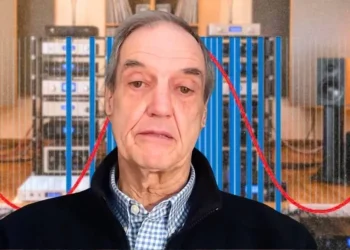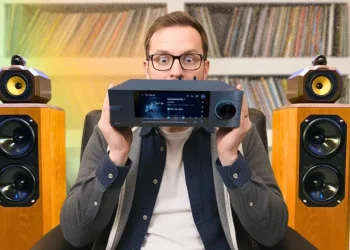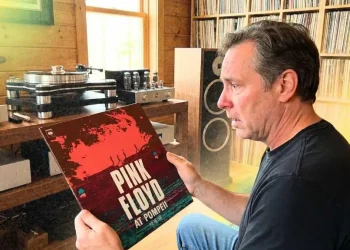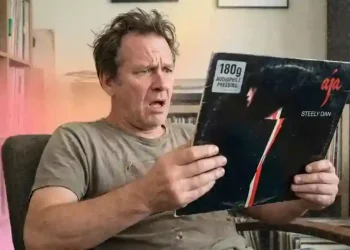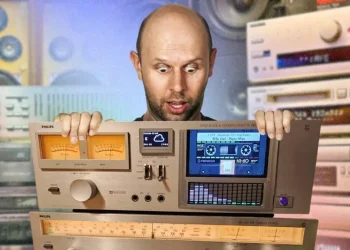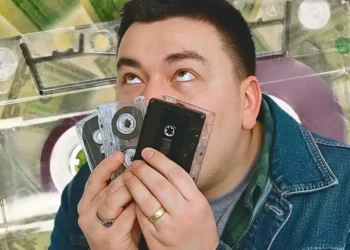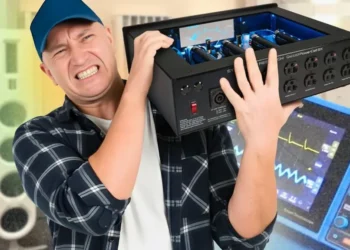7 Reasons Why SACDs Are Poised for a Major Comeback in 2025
Physical Media’s Audiophile Secret Might Finally Go Mainstream
If you’re serious about sound quality, you’ve likely explored vinyl, CDs, or hi-res streaming. But there’s one format audiophiles swear by that’s often overlooked: Super Audio CD (SACD).
Introduced in 1999 and powered by Direct Stream Digital (DSD), SACD never broke into the mainstream like vinyl or compact discs—but it never died, either. Instead, it quietly built a cult following among collectors, sound engineers, and music lovers who crave fidelity.
Now, with the renewed interest in physical formats, SACD might just be ready for a well-earned comeback. Here’s why.
1. Unmatched Sound Quality with DSD Audio
SACDs use Direct Stream Digital (DSD), a 1-bit format that samples audio at 2.8224 MHz—about 64x the rate of standard CDs. This enables smoother, more lifelike sound reproduction with extended frequency response (up to 100 kHz) and a theoretical dynamic range of 120 dB.
In practice, SACDs deliver around 110–115 dB of dynamic range, outperforming CDs (96 dB) and easily outclassing vinyl (typically 55–70 dB).
Many describe the SACD experience as hearing a “black background”—a silence so deep that every reverb tail, cymbal shimmer, or breath between notes becomes more vivid. And unlike vinyl, SACDs don’t wear down, pop, or crackle with age.
2. True Surround Sound, Not Simulated Gimmicks
Many SACDs feature genuine 5.1 surround mixes—something most streaming services only simulate through processing. Each channel in an SACD surround mix is discrete and uncompressed, offering a completely immersive listening experience.
Think: Pink Floyd’s Dark Side of the Moon with sound swirling around you, or classical performances where instruments are positioned exactly as they would be in a concert hall.
You’ll need compatible gear—a surround-capable SACD player and speaker setup—but most SACDs are hybrid discs, so they’ll still play in stereo on standard CD players.
3. Better Mastering from Audiophile Labels
Labels like Mobile Fidelity, Analogue Productions, BIS, and Pentatone often go back to original master tapes, avoiding the “loudness war” compression that plagued many CD releases in the 2000s.
Because DSD isn’t as easy to edit and compress as PCM, many SACDs retain more dynamic range, texture, and natural tonality—especially those produced with care by experienced engineers.
That said, not every SACD is perfectly mastered. Look for trusted labels to get the best-quality reissues and recordings.
4. Affordable, Accessible Equipment Options
Contrary to popular belief, you don’t need a five-figure setup to enjoy SACDs. There are reliable players from Sony, Yamaha, and Pioneer on the used market for under $200. Some early PlayStation 3 models also support SACD playback, making them a viable option for tech-savvy collectors.
Most hybrid SACDs have a standard CD layer too, so you can start building your library today—even if you’re not fully equipped for DSD just yet.
And if you already own a home theater system, some newer players transmit DSD over HDMI—just make sure both your player and receiver support it natively.
5. DSD Was Designed for Archiving, Not Just Listening
DSD was originally created as a professional archival format. With its high sample rate and low noise floor, it captures everything from audible sound to ultrasonic detail.
Institutions like the Library of Congress have used DSD to preserve analog tape archives, making it a trusted standard for long-term storage. Many SACDs use those same DSD transfers, offering consumers an almost studio-grade copy of the master.
Physically, SACDs are robust too—polycarbonate discs tested to last 50–100 years when stored properly.
6. They’re Beautiful, Collectible, and Offline-Ready
Just like vinyl, SACDs satisfy the desire to own something physical. Japanese SHM-SACDs, for instance, often come in miniature LP-style sleeves with stunning artwork and meticulous packaging.
They’re not cheap—most cost $15–30, with rarer editions going much higher—but they’re not tied to internet access, subscriptions, or licensing deals. When you own an SACD, it’s yours for life.
For collectors, part of the fun is tracking down out-of-print titles, imports, or numbered editions from premium labels.
7. SACD Releases Keep Growing Every Year
Despite being labeled a “dead format,” SACD has seen consistent new releases—particularly from Japan and audiophile labels.
In 2022, nearly 750 new SACD titles were released globally. That momentum continued into 2023 and 2024, with hundreds of fresh reissues and new recordings across classical, jazz, fusion, and even anime soundtracks.
Artists like Kazumi Watanabe and groups like T-Square still release brand-new albums on SACD, while labels like Channel Classics and Pentatone record modern performances directly to DSD.
Final Thoughts: SACD Was Never Dead—It Was Just Waiting
SACD never became the dominant format it could have been. But in a time when physical media is making a comeback and listeners crave better sound, it may finally get its second chance.
With high-resolution stereo and surround sound, careful mastering, and lasting value, Super Audio CDs are more than just a niche—they’re a serious format for serious music lovers.
This article was rewritten by JournosNews.com based on verified reporting from trusted sources. The content has been independently reviewed, fact-checked, and edited for accuracy, neutrality, tone, and global readability in accordance with Google News and AdSense standards.
All opinions, quotes, or statements from contributors, experts, or sourced organizations do not necessarily reflect the views of JournosNews.com. JournosNews.com maintains full editorial independence from any external funders, sponsors, or organizations.
Stay informed with JournosNews.com — your trusted source for verified global reporting and in-depth analysis. Follow us on Google News, BlueSky, and X for real-time updates.


